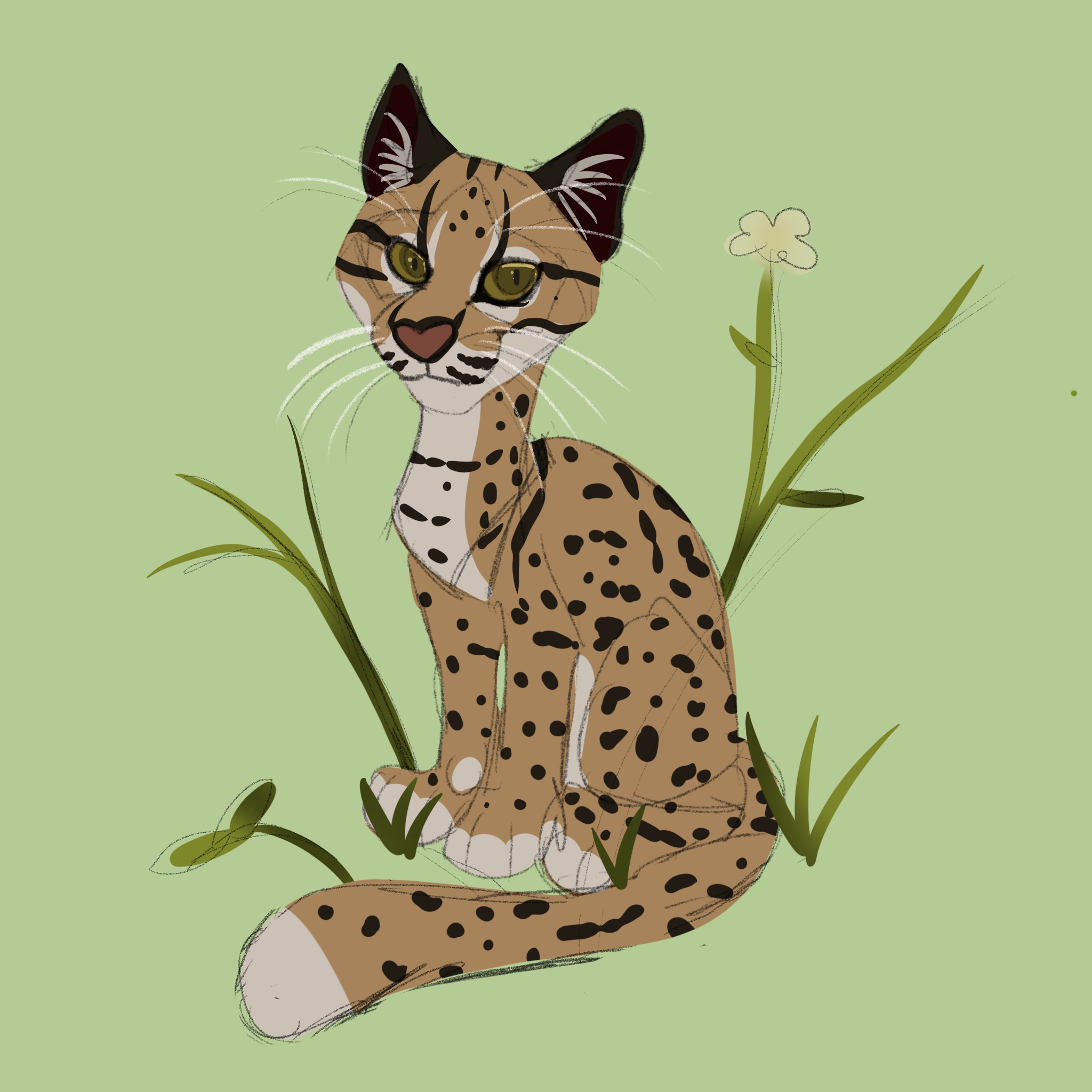Report - Oncilla
Introduction and Taxonomy:
Leopardus tigrinus, also known as the oncilla, is a feline indigenous to a large portion of northern South America. The family Felidae has two subfamilies, Felinae and Panthera. While both of these subfamilies have much in common, such as digitigrade locomotion, similar body shapes, spiny tongues, and whiskers, Felinae are distinct because their hyoid bone is shaped in a way that allows them to purr but not roar. Oncillas are part of this family, along with other “smaller” big cats such as cheetahs, caracals, and lynxes, while “larger” big cats such as lions and tigers are members of Panthera, as they can roar.
Appearance:
Although their fur patterns resemble large cats like leopards, oncillas are quite small, usually weighing less than a housecat at 3-6 lbs. They brown with black spots and mottling along their pelt to help them blend into the forest while hunting, and paler undersides as is seen in most mammals. They also have distinct white splotches on the backs of their ears which may serve the purpose of scaring off predators, by appearing as eyes. They have long, thick tails give them excellent balance. As many as 32% of oncillas in Brazil are melanistic, meaning they have all black coats, and are significantly more common in densely forested areas. This mutation is likely beneficial in dark areas so they can hide in the shadows when hunting.
Habitat:
Oncillas inhabit much of northern South America, but scientists have recently discovered that there are two distinct populations of them that cannot interbreed. This is due to deforestation, which has split the animals up so they became genentically distinct. Because of this, in 2013, oncillas that lived in southern Brazil and Argentina were recognized as a different species from the others and dubbed the Southern Tiger Cat. This new species is slightly smaller, and known to interbreed with the Geoffrey’s cat. Oncillas are known to inhabit a wide variety of conditions, from very moist cloud forests in Costa Rica to dry Cerrado forests in Brazil.
Behavior:
Oncillas spend most of their time on the ground, hunting for small animals like rodents, lizards, birds, and frogs. They hunt like housecoats, by stalking their prey and then pouncing when close enough. They are also able to climb trees, but are less likely to do so when there is food on the ground. Most oncillas are nocturnal, but a few populations who rely on lizards as their main source of food are diurnal. They are generally solitary animals outside of mating season, but are known to travel and hunt in pairs during mating season when they are feeling more social.
Oncillas’ reproductive cycles are similar to other felines of comparable size. A female’s estrous cycle lasts about a week, and during this time they try to mate with a male. Their young, called kittens, are usually born in litter of one to three after a gestation of about 75 days. Uniquely, oncilla kittens take longer than other cats to open their eyes, and can take up to 17 days. Compare this to housecats, who take 8-12 days on average. They also take 5-8 weeks to eat solid food, as opposed to housecoats taking 3-4 weeks. They reach sexual maturity around two years, also quite late for cats, and live about 11 years on average in the wild.
Conservation Status:
The oncilla is considered vulnerable due to human activity. Because of their beautifully patterned coats, they are often victims of poaching for the fur trade despite laws protecting them. Like all other rainforest animals, they also are greatly affected by deforestation to create more farmland. A project in Costa Rica called ONCILLA aims to conserve this species by conducting research throughout the areas they may live to determine where they are, as well as educating the public and lawmakers about this species.
Sources:
https://en.wikipedia.org/wiki/Oncilla
https://animalia.bio/oncilla#:~:text=Population%20number,8%2C932%20to%2010%2C208%20adult%20individuals.
https://en.wikipedia.org/wiki/Leopardus_guttulus
https://www.nationalgeographic.org/media/photo-ark-oncilla/
https://felidaefund.org/learn/cats/oncilla
http://www.oncillaconservation.org/
Submitted By aeluromancyarts
for Jungle Expedition: Report
Submitted: 3 years ago ・
Last Updated: 3 years ago
